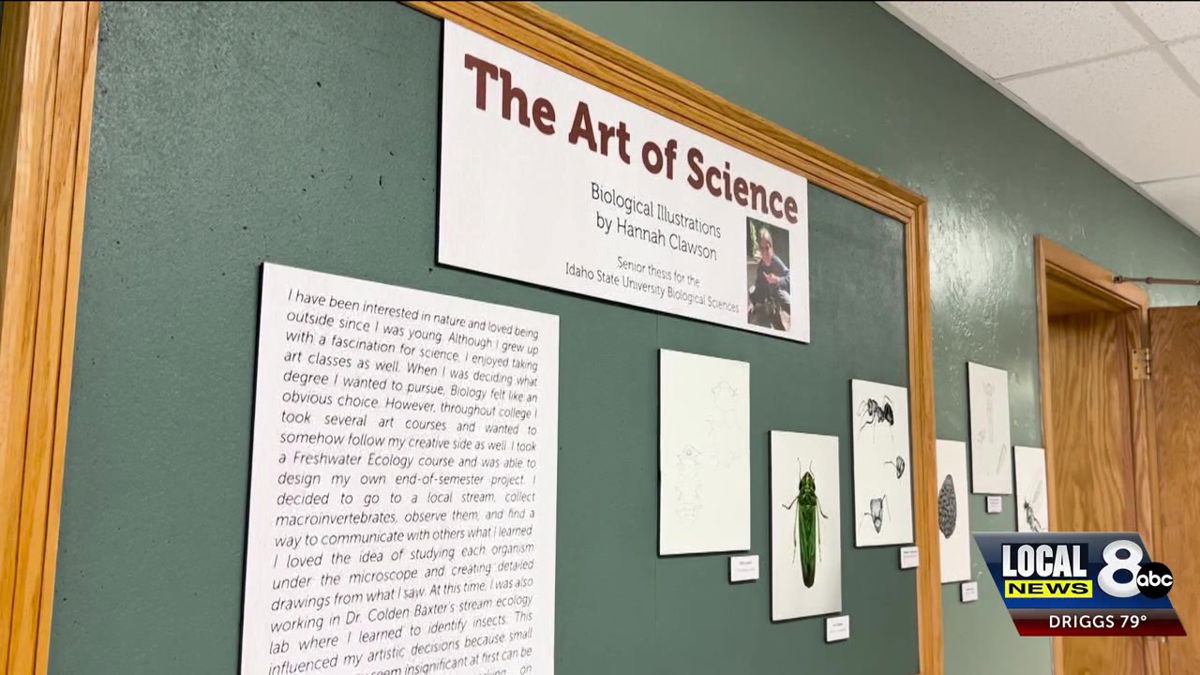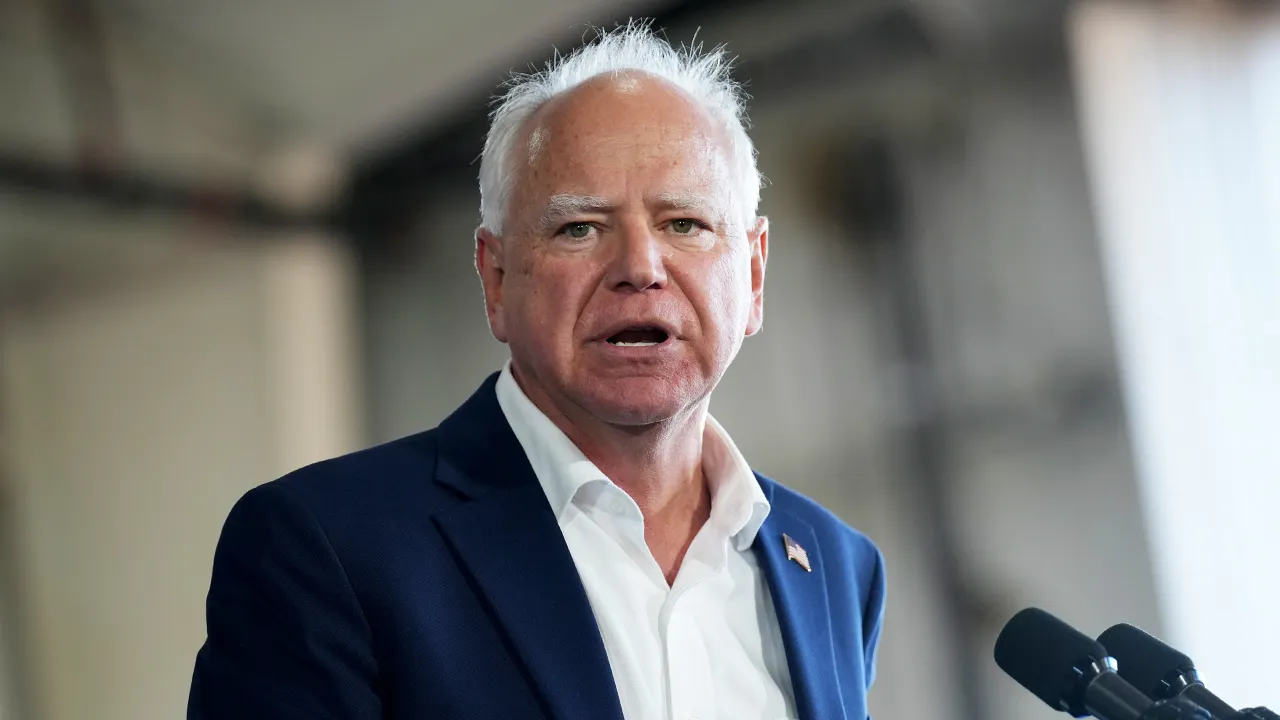Lifestyle
Wait Wait's Summer Break with Jason Isbell, Rachel Maddow, and more! : Wait Wait… Don't Tell Me!

Amy Sussman/Getty Images

Amy Sussman/Getty Images
This week, Wait Wait celebrates the end of summer with some of our favorite guests including Jason Isbell, Rachel Maddow, Patti LuPone, and more!

Lifestyle
L.A. contractors razed a native plant garden for kids. What happens now?
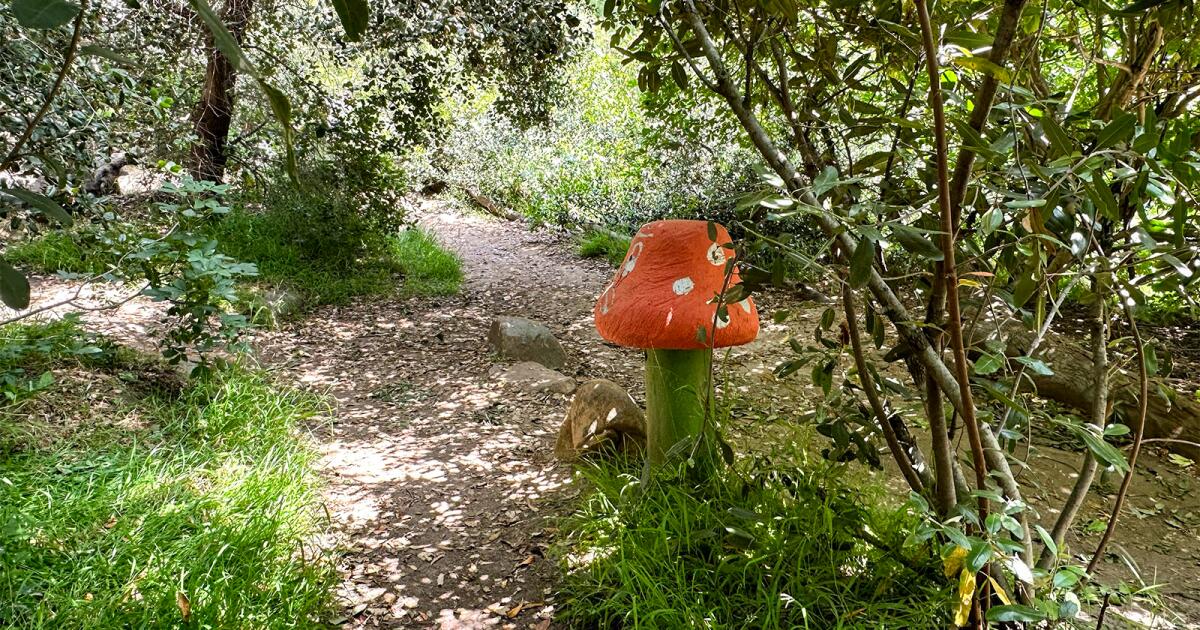
For more than a decade, visitors say the Children’s Garden at Elysian Park was a shady showcase for indigenous plants, with dense stands of mature native trees and shrubs lining the paths of the grounds just west of Grace E. Simon Lodge and creating a cool, restful places to walk, play and learn.
Then, in late June, all that lush undergrowth was leveled by a contractor hired by Los Angeles’ Department of Recreation and Parks to conform with the Los Angeles Fire Department’s brush clearance requirements. Since then, finger pointing and cries of “Ecocide” have reverberated on social media and during city meetings.
Update:
2:00 p.m. Aug. 9, 2024This story has been updated to include additional information provided by a Los Angeles Fire Department spokesperson.
“It was a magical environment,” said Shari Lee, a nearby resident who’s been walking the site for years. “Now it just seems sort of … blank.”
The Children’s Garden in Elysian Park after the brush clearance.
(Shari Lee)
These heated exchanges are all part of an ongoing and often contentious discussion about how a city like Los Angeles should manage urban wild lands with native plants. No one questions the need to remove such fast-growing invasives as black mustard, which becomes kindling for wildfires once it dries out in the summer.
But should green native shrubs like toyons and lemonade berry be treated the same way? Native plant enthusiasts say those plants control erosion, provide shade and habitat for wildlife and pose little fire danger.
Critics say that before the work was done, the city should have notified stakeholders, such as the Northeast LA Forest School, which pays to use the Children’s Garden (also known as the Children’s Arboretum) year round for outdoor instruction. They also believe there should have been an environmental evaluation of the site before Mariposa Landscapes Inc. of Irwindale did the work.
The trees and shrubs had been planted more than a decade earlier by the urban forestry nonprofit North East Trees, a project that included signage to identify the many native species added to the site, such as California buckeye, California black walnut and oaks.
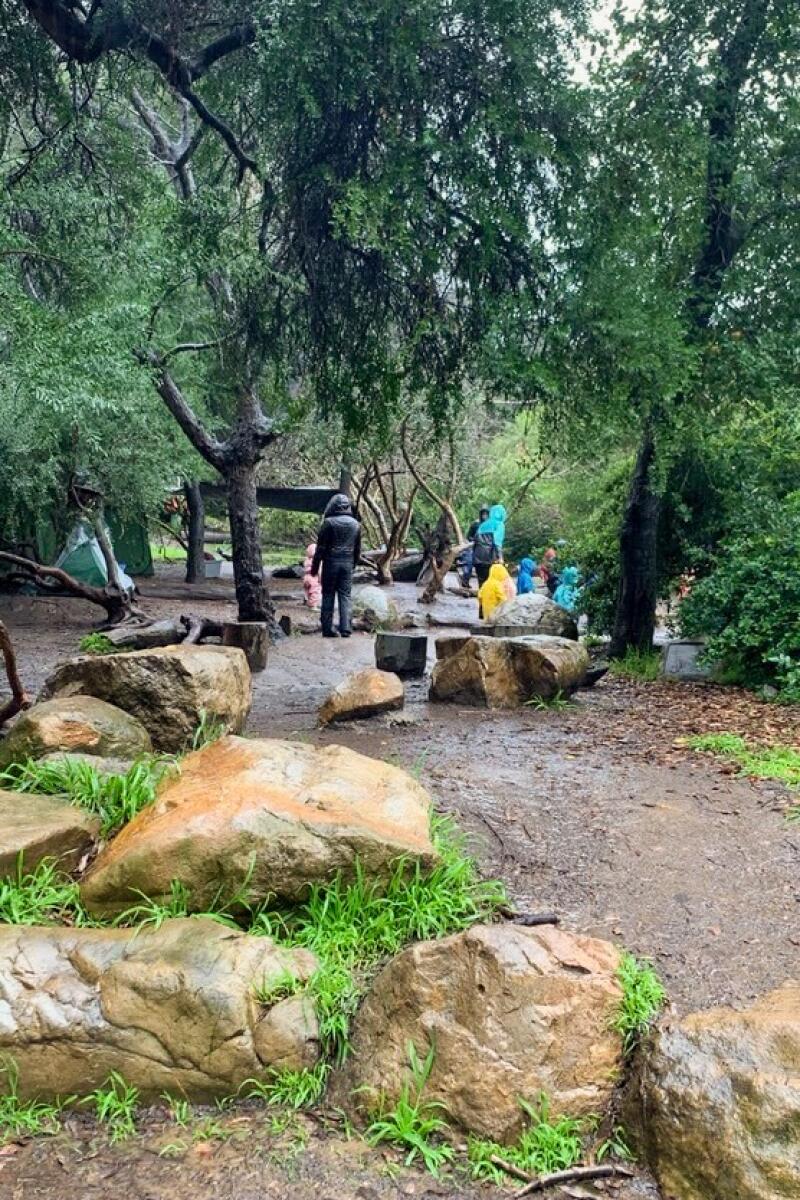

The Children’s Garden in Elysian Park on a rainy day in February, 2024 (top) and after the brush clearance on June 27, 2024. (Becca Hackett-Levy)
Today, the area looks denuded. The remaining trees have been trimmed so their limbs are at least 6 feet above the ground per fire prevention rules, some of the plant identification markers have been upturned and the dry, loose soil is covered with leaf debris.
Both Mariposa and North East Trees contract with the city on other projects. Neither was willing to be interviewed for this story.
The brush clearing was required by the Los Angeles Fire Department to protect a metal shed where the parks department stores fuel for lawn mowers, said Leon Boroditsky, principal ground maintenance supervisor for the forestry division of Recreation and Parks.
While fire inspectors issued a brush violation around the shed at the Children’s Garden in March, they would not have required those mature native shrubs to have been removed, Los Angeles Fire Department spokesperson Karla Tovar said Friday. Typically Recreation and Parks officials consult with fire inspectors about how the trimming should be conducted, Tovar said, but that didn’t happen this time.
LAFD is “saddened by the approach that was taken with this brush clearance,” Tovar said. “We look forward to collaborating with [Recreation and Parks] in future endeavors to make sure something like this doesn’t occur again.”
Boroditsky didn’t order the clearing; he was away when the project was contracted. He said that he didn’t know how long the shed had been at the site but that this appeared to be the first year the LAFD felt the building needed to be considered a structure under the brush-clearing rules.
The city is also trying to find out how and why North East Trees installed the native plant garden at the park in the first place. It happened about 20 years ago, said Rose Watson, public information director for Recreation and Parks, but the department can’t find any documents outlining the project or what plants were added to the site.
There are lots of unanswered questions, Boroditsky said, and the clearance has created so much uproar that the city plans to bring in an independent third-party “arboreal expert” to do their own evaluation.
“There have been a lot of knee-jerk reactions and inflammatory rhetoric happening,” Boroditsky said. The city doesn’t even have photos of what the area looked like before the clearing, he added, “which is why I’m saying they don’t have evidence to make some of those claims.”
The site is in what the fire department classifies as a “very high fire hazard severity zone,” Boroditsky said, and the rules for clearance in such spots are strict. For instance, in “areas within 200 feet of structures and/or 10 feet of roadside surfaces or combustible fence: Grass shall be cut to 3 inches in height. Native brush shall be reduced in quantity to three inches in height. This does not apply to individual native shrubs spaced a minimum of 18 feet apart, provided such shrubs are trimmed up from the ground to 1/3 of their height with all dead material being removed ….”
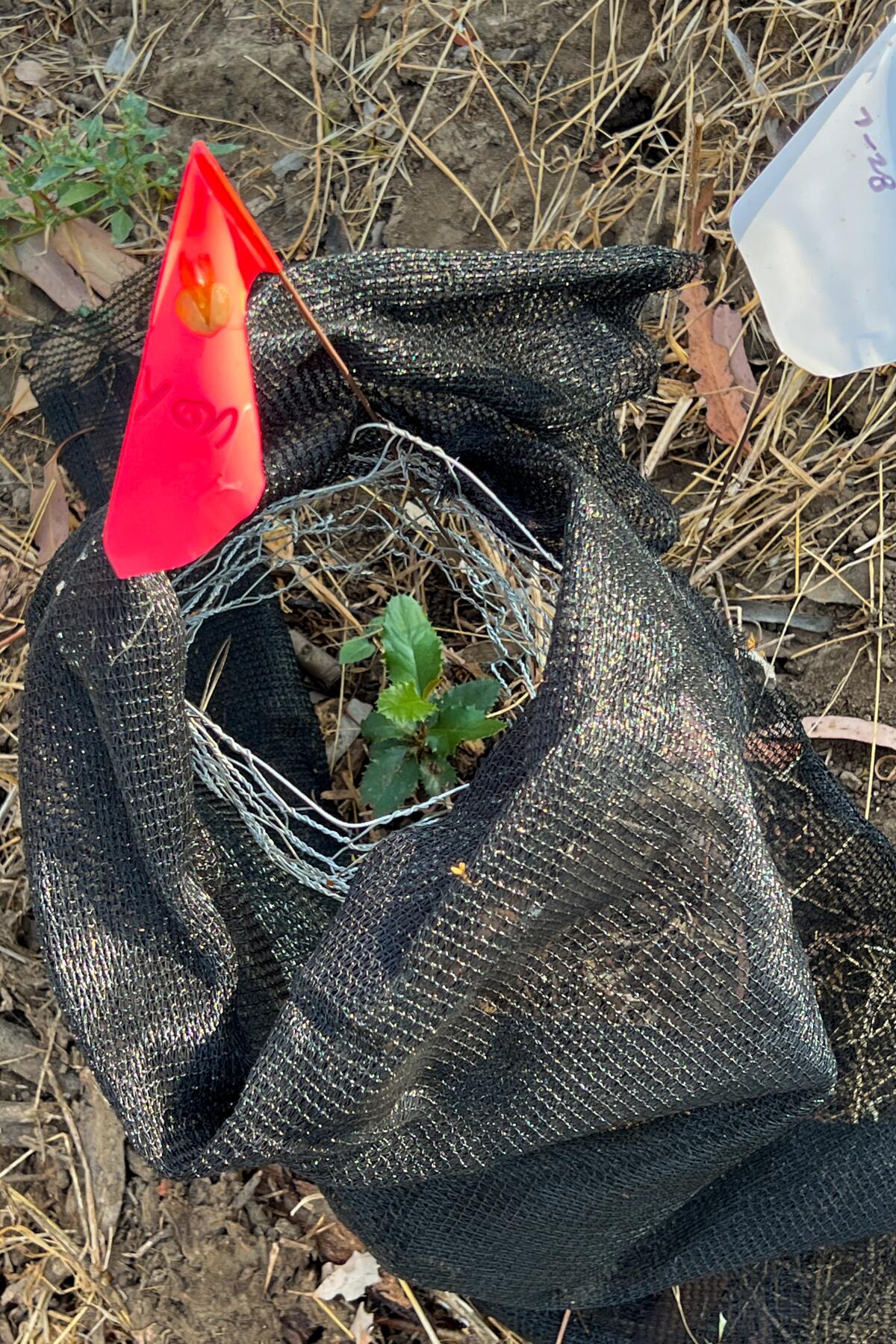
Volunteers located tiny native plants like this toyon that survived the brush clearing, wrapping them in shade cloth to protect them from the scorching sun.
(Jeanette Marantos / Los Angeles Times)
So basically, the city paid $12,500 for brush clearance to protect a metal storage shed. Critics question whether it would have been simpler and cheaper to just move the shed, say to the adjacent Grace E. Simon Lodge enclosure? “That’s really not something I can clarify now,” Boroditsky said. “That’s something we’re evaluating now.”
Becca Hackett-Levy, director of the Northeast LA Forest School, said the shed was at the Children’s Garden before she began using the location nearly eight years ago. She added that she was on maternity leave after the birth of her second child when she got panicked calls from parents saying the space she had paid the city to use for her year-round outdoor classroom had been devastated.

A storage shed at the edge of the Children’s Garden in Elysian Park reportedly triggered the brush clearance around the site. The Grace E. Simon Lodge is behind the fence to the left.
(Jeanette Marantos / Los Angeles Times)
After weeks of uncertainty, Hackett-Levy said she got a call from parks officials Tuesday who told her that they’d found some areas she might be able to use nearby. “They found some good spots in the area, and they’re even changing their mowing schedule to accommodate the school,” she said Wednesday. “I’m just so thankful and shocked, frankly.”
The other concerns won’t be so easily resolved.
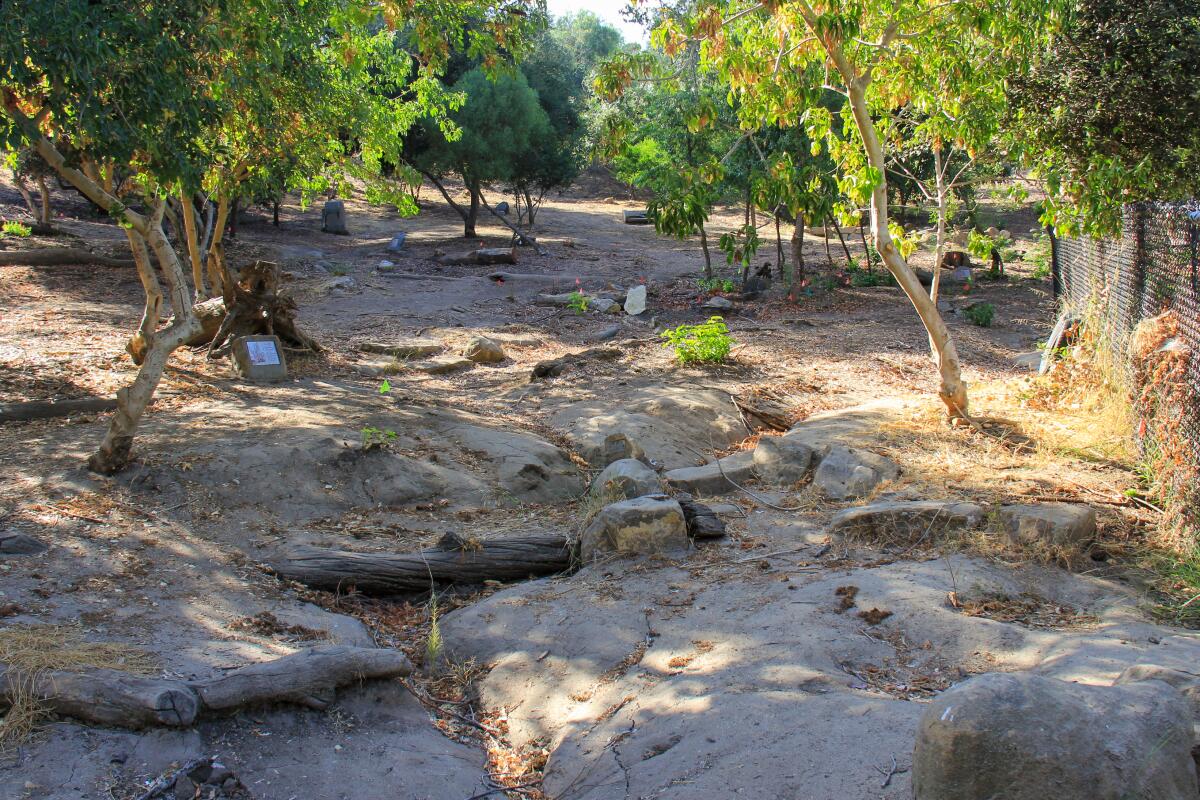
The Elysian Park Children’s Garden on Aug. 1, about a month after the brush clearance.
(Jeanette Marantos / Los Angeles Times)
Native plant supporters mobilized within hours of the clearing to locate and try to protect surviving baby native shrubs, dotting the area with small red and yellow flags to indicate their locations. Without shelter from the larger shrubs, they were vulnerable during the severe heat, said Brenda Contreras, director of the native plant and wildlife support group Coyotl wan Macehualli. So volunteers wrapped many of the plants in chicken wire and shade cloth for protection and carried in water to irrigate the survivors.
Elizabeth Birkenbuel, who lives above the site on Park Drive, was so distressed by volunteers lugging large containers of water on the slippery hill that she encouraged them to hook up hoses to her outdoor faucet so they could more easily fill their buckets.
The city typically does brush clearance in the area to remove invasive and highly flammable black mustard and castor bean plants, Birkenbuel said, “but it was really aggressively cleared this time, in a way I’ve never seen it done before. I was very shocked. I usually end my walks there in the summer because it was very shaded, lush and cool, but it’s vastly different now.”

The Children’s Garden in Elysian Park, before the clearance of plants.
(Shari Lee)
Birkenbuel said she can’t afford to keep sharing her water; she’s hoping the city will provide an alternative source. That’s another thing Recreation and Parks is researching right now, Boroditsky said, along with why stakeholders weren’t given advance notice about the work, per usual, and whether the department needs to change its protocols for when it requires environmental review of a site before brush clearance can occur.
However, native plant advocates are still going to city meetings and onto social media to accuse the city of deception and “ecocide” by killing protected plants like California black walnut.
Boroditsky, a certified arborist, said the site still has lots of native trees, like buckeyes, walnut and oaks, that may have been trimmed to conform to clearance rules but that were not removed. “There is no evidence that protected trees were removed,” he said. Although he added that that’s partly because he didn’t have any photographs of the site before the clearance to confirm what plants were no longer there.
He accused community activists of guerrilla gardening in the area by planting more native plants before the city had time to assess what happened and what needed to change. Adding more plants before the city has a plan is a problem, he said, because similar brush clearing might have to be repeated in the future.

The Children’s Garden in Elysian Park on Aug. 1, about a month after the brush was cleared.
(Jeanette Marantos / Los Angeles Times)
However, Contreras and Flink say no one is putting new plants into the ground, especially in the heat of summer, when they would have little chance of surviving. All they’re doing, Contreras said, is trying to identify the plants that survived the clearance and keep them alive until the rains come this winter, which, they worry, could result in problematic erosion in that stripped area.
Meanwhile, Mason Flink and Max Kanter, co-founders of Garden City LA, are trying to build awareness of land management at the park by leading free, hour-long tours on the West Loop Trail from Aug. 10 through Sept. 1 to demonstrate the ways public lands can be managed and how the public can get involved. The tour includes the cleared Children’s Garden and the thriving native plant Test Plot gardens they help tend near the Marian Harlow Grove.
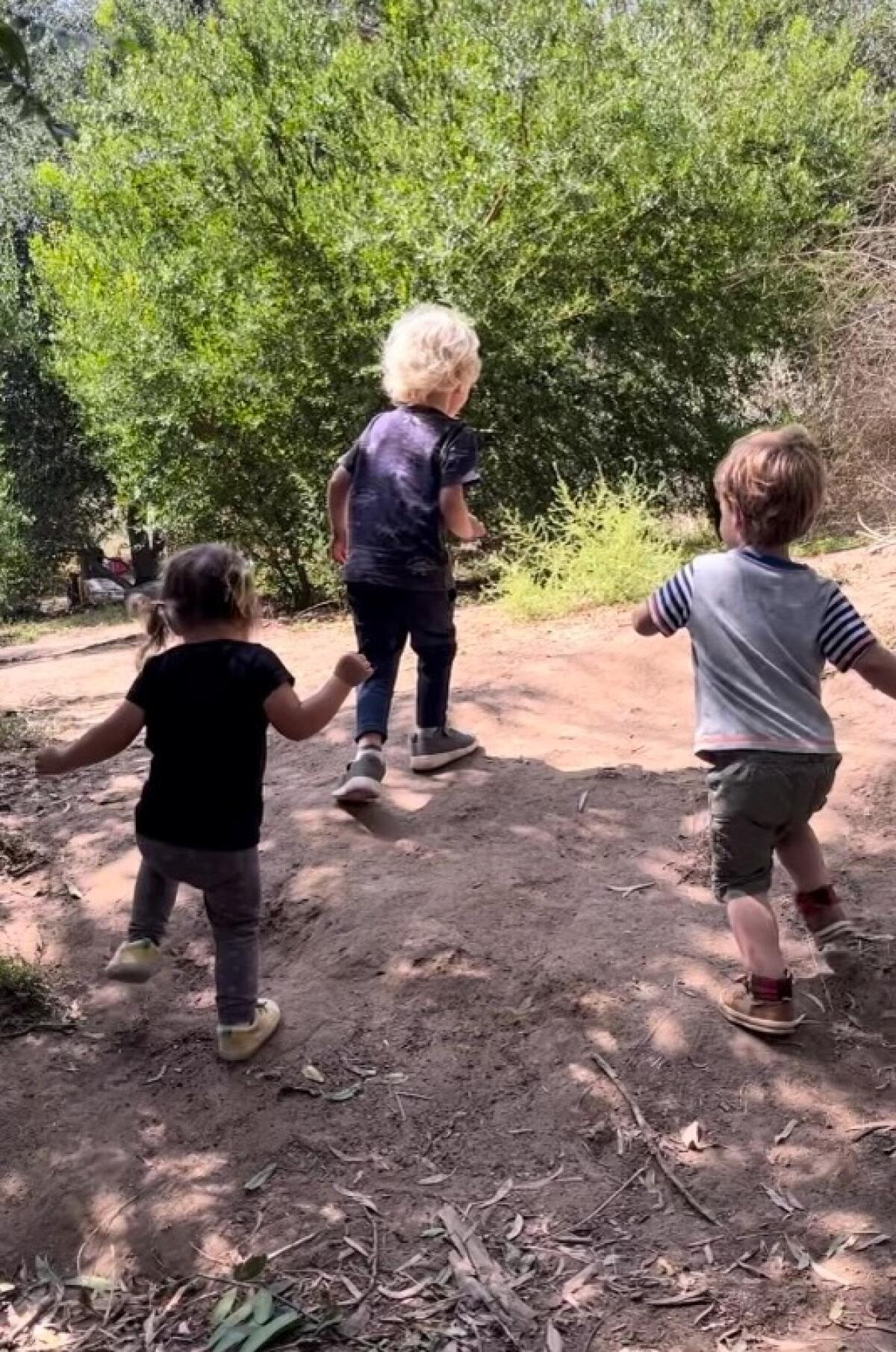
Preschoolers from the Northeast LA Forest School race up a path last fall toward the native shrubs in the Children’s Garden at Elysian Park.
(Becca Hackett-Levy)
“Before they cleared out all the native plants, our point of going through the Children’s Garden was to show how all this life was flourishing,” Flink said. “Now it will offer a stark visual contrast to the Test Plot native plant gardens to spark conversations among the participants.”
Los Angeles City Councilman Hugo Soto-Martinez, whose district includes that part of Elysian Park, has taken the role of mediator and hopes to bring everyone together to discuss what happened and how to avoid problems going forward.
The city “made a big mistake in not communicating with the community groups” who frequent that space, Soto-Martinez said in an interview. But Recreation and Parks “gave the correct instruction for the brush clearance,” he added, “because we don’t want a brush fire in that area with so many homes nearby.”
As for the storage shed that apparently triggered the $12,500 upset: “That’s one of the first things we thought about … couldn’t we have just moved it?” Soto-Martinez said. “I think that’s a very simple question to ask and a fair thing to keep asking.”
Lifestyle
These Olympic medals don’t exist — so we made them up

Clockwise from left, pole vaulter Armand Duplantis, the Canoe Slalom Women’s Kayak Cross, women’s rugby player Sammy Sullivan, and the Men’s 100m Final.
Kirill Kudrtavtsev/AFP via Getty Images; Alex Davidson/Getty Images; Kristy Sparow/Getty Images; Richard Heathcote/Getty Images
hide caption
toggle caption
Kirill Kudrtavtsev/AFP via Getty Images; Alex Davidson/Getty Images; Kristy Sparow/Getty Images; Richard Heathcote/Getty Images
NPR is in Paris for the 2024 Summer Olympics. For more of our coverage from the Games, head to our latest updates.
The real Olympic medals are given out according to rules about speed, scores, perfection, actually defeating your opponent, all that boring stuff. But what if they weren’t?

What if there were another set of medals we could give to some of the best achievements of the games, even if they weren’t in officially recognized sports? We tried to think of what we’d hand out. So here are nine additional medals — call them the Extra Golds — for some of the additional feats of strength and cleverness that have delighted us in the last two weeks.
The one-man lift of one man

Mijain Lopez Nunez (right) celebrates with his coach on Aug. 6, 2024.
Punit Paranjpe/AFP via Getty Images
hide caption
toggle caption
Punit Paranjpe/AFP via Getty Images
It would have been enough that Cuba’s Mijain Lopez Nunez won his fifth consecutive gold medal for Greco-Roman wrestling — becoming the first Summer Olympian ever to hit that milestone. After he finished, he unlaced his shoes and set them on the mat to mark his retirement. But it wasn’t all poignancy — he also playfully flipped one coach onto his back, then lifted another and carried him a few steps. It’s one thing to win your match; it’s another to set a record in a grueling event and then celebrate by picking up an entire wrestling coach and carrying him around.
The 400 meter WHAAAAT?

Quincy Hall on the home straight in the Men’s 400m final on Aug. 7, 2024.
Richard Heathcote/Getty Images
hide caption
toggle caption
Richard Heathcote/Getty Images
Team USA sprinter Quincy Hall was going to lose the men’s 400 meters. It was obvious. Heading into the last 150 meters or so, he seemed to have been bested by not one, not two, but three of the other guys in the race. And then he just accelerated. It looked magical. One of the curious things about sprinters is that when they’re speeding up, it can almost look like they’re slowing down. As Hall pushed toward the finish line, if you were watching him in a vacuum, you might think he was more spent, more tapped out. But he was somehow passing everybody! And he leaned at the finish line and just edged out Matthew Hudson-Smith of Great Britain to win the gold medal. We still have to admit: We don’t entirely get what happened.
The athlete drop

The beginning of the Canoe Slalom Women’s Kayak Cross heats on Aug. 4, 2024.
Alex Davidson/Getty Images
hide caption
toggle caption
Alex Davidson/Getty Images
Olympic sports begin in a lot of ways. A whistle blows, or a pistol bangs, or an athlete runs or serves or jumps. But the gold medal in athlete-dropping can only go to the kayak cross. In this event, several competitors are kept suspended above the course they are about to paddle through. Then they are dropped. Yes, they are flat-out indifferently dumped into the water the way you would release an undersized fish. And, crowded together, they have to navigate a course of buoys and get to the finish line. Anybody can run when a whistle blows or start a game when the referee says so. This is something entirely different.
The 6.25-meter maximum flex

Armand Duplantis set the new Olympic record in the men’s pole vault final on Aug. 5, 2024.
Kirill Kudrtavtsev/AFP via Getty Images
hide caption
toggle caption
Kirill Kudrtavtsev/AFP via Getty Images
Swedish-American pole vaulter Armand Duplantis — Mondo — already was guaranteed a gold medal. He didn’t need to jump anymore. But Mondo does not jump because he needs to. No, Mondo jumps because he wishes to. And at the Paris finals, even when he already knew he had won, he wished to do something more: swipe the world record held by his greatest rival … [checks notes] himself. Earlier this year, Duplantis jumped 6.24 meters. So what was next? 6.25 meters, obviously. Never one to deny his loyal audience the drama they crave, he took three jumps to clear the bar at that height, but on that last one, he nailed it. Who knows what he’ll do next? Dare we hope for … 6.26 meters?
Audience participation

Léon Marchand reacts after competing in the Men’s 400m Individual Medley Heats on July 28, 2024.
Sarah Stier/Getty Images
hide caption
toggle caption
Sarah Stier/Getty Images
The Paris crowds have been thrilling to listen to, overall. Particularly in support of French athletes, they cheer, they yell, they chant, they roar. But they may have peaked when swimmer Léon Marchand was in the pool. Marchand swam in four individual races, and he won four gold medals. And every time, the crowd didn’t just yell for him; they pulsated for him. Whenever he was doing a stroke that brought him rhythmically up out of the water, the crowd made sure that every time they saw his head, they gave him a fresh shout. Let’s be honest: It’s hard to know whether any of this is intelligible to a guy whose head is still mostly underwater and who is hyperfocused on things like his own arms and legs. But it was as if the people watching his races wanted you to be sure they were cheering for no one else, sure they were there for him. And indeed, we knew.
The out of left field leader

Kristen Faulkner passes the finish line during the women’s road race of cycling on Aug. 4, 2024.
Wu Huiwo/Xinhua – Pool/Getty Images
hide caption
toggle caption
Wu Huiwo/Xinhua – Pool/Getty Images
U.S. competitor Kristen Faulkner didn’t think until relatively recently that she was going to compete in the women’s road race that runs almost 100 miles through the streets of Paris and surrounding towns. She didn’t even think she was coming to the Olympics until another competitor resigned from the team in July. As in, this July, last month. But things happen, and there she was. Late in the road race, she was in a chasing pair with another cyclist, separated by a few seconds from the leading pair. The announcers talked about whether the chasing pair could make a move — did they have enough left to get close? Could they close the gap? Well, they did close the gap. But almost as soon as the two pairs met and became four competitors together, Faulkner took off. Nobody followed. The announcer yelled, “Nobody is chasing! Nobody is chasing the American, Kristen Faulkner, the gap is exploding!” Faulkner — who only picked up cycling in 2016 – started her move with about two miles to go, and she ultimately won by almost a full minute. She was simply gone. Oh — and a couple days later, she won a gold medal in the track cycling team pursuit, making her the first U.S. woman to win gold medals in two different disciplines. Not the August she thought she was going to have in July, huh?
The last-minute lean

Noah Lyles crosses the finish line to win the Men’s 100m Final on Aug. 4, 2024.
Richard Heathcote/Getty Images
hide caption
toggle caption
Richard Heathcote/Getty Images
All of the sprinting events rely on the lean, for the simple reason that the rules state that you cross the finish line with your torso, not your head or your foot. (Quincy Hall, noted above, leaned, too.) Even after the men’s 100 meter dash, many of us believed that Team USA’s Noah Lyles had not won it. We were not even sure he had medaled. When they said he had, in fact, won the gold by five one-thousandths of a second, it felt like … no, he didn’t. He didn’t, did he? As it turned out, he did. Kishane Thompson of Jamaica looked like his essence, his general being, was ahead of Lyles. Your eyes might have told you he was the winner — at least one commentator’s eyes told her he was. Ah, but Lyles has the lean. He won by pushing his chest forward just enough. Lyles ran a remarkable race overall; he’d been in last place at the 40-yard mark. But you have to respect the lean that ultimately sealed the deal.
A note: It was only after I first added Lyles to this list that the news broke that he had competed in the 200 meters after testing positive for COVID. It was a sobering reminder of the lingering effects of COVID on these games that what had been such a uniformly great story turned troubling. Lyles is far from the only athlete who has gotten COVID or competed with COVID. But he has asthma, and particularly given what we know about long COVID, the sight of him leaving the field in a wheelchair was a reminder of the risks that remain, especially in the absence of meaningful precautions.
Use of an accessory

Stephen Nedoroscik celebrates after the Artistic Gymnastics Men’s Pommel Horse Final on Aug. 3, 2024.
Jamie Squire/Getty Images
hide caption
toggle caption
Jamie Squire/Getty Images
Look, by now we all know about Stephen Nedoroscik, “Pommel Horse Guy,” who helped clinch the bronze medal for the U.S. men’s gymnastics team. We know that he is great at pommel horse – a specialist, in fact. We know that he was the last to go, that he had to hit and hit hard in order to win the bronze that was obviously so special to those guys that it might as well have been gold. But we must also recognize the power of his accessory game. Nedoroscik has a couple conditions — coloboma and strabismus — that affect his eyesight, and he says that when he competes on pommel horse, he’s doing it by feel, so he leaves his glasses behind. We (his fans) got to the point where the sight of his glasses hanging on the chalk bowl – as they did during the team final, and as they did when he won an individual bronze medal in pommel horse – had an unmistakable, “Oh, it’s HAPPENING” feeling. Like lots of us, he doesn’t wear his glasses for fashion, but that doesn’t mean they can’t be cool.
Enthusiasm management

Sammy Sullivan wasn’t ready to celebrate until the win was official.
Kristy Sparow/Getty Images
hide caption
toggle caption
Kristy Sparow/Getty Images
When the U.S. women won a bronze medal by beating Australia in rugby sevens, it was an absolutely classic last-minute sports moment. With Team USA down 12-7 in the closing seconds, Alex Sedrick ran all the way down the field from almost the opposite end and scored a “try,” tying the match at 12. Team USA would still need a conversion — a pretty easy-looking one, but still – in order to actually win. And so, as the team celebrated Sedrick’s score, one face on the sideline was not ready to celebrate. Sammy Sullivan served the very important function of jinx avoider, because as they waited to see whether they would actually get that conversion, she told her teammates: “SHUT UP.” We’ve all been there, teetering on the edge of jubilation, afraid that other people will ruin it just by admitting it’s happening. We have all lived with the fear that our moment of victory is impossibly fragile and hubris will make it shatter. Sammy Sullivan was all of us: “SHUT UP.”
This piece also appeared in NPR’s Pop Culture Happy Hour newsletter. Sign up for the newsletter so you don’t miss the next one, plus get weekly recommendations about what’s making us happy.
Listen to Pop Culture Happy Hour on Apple Podcasts and Spotify.
Lifestyle
Rick Ross Sued by Disabled Man For Not Making Car Show Wheelchair Accessible
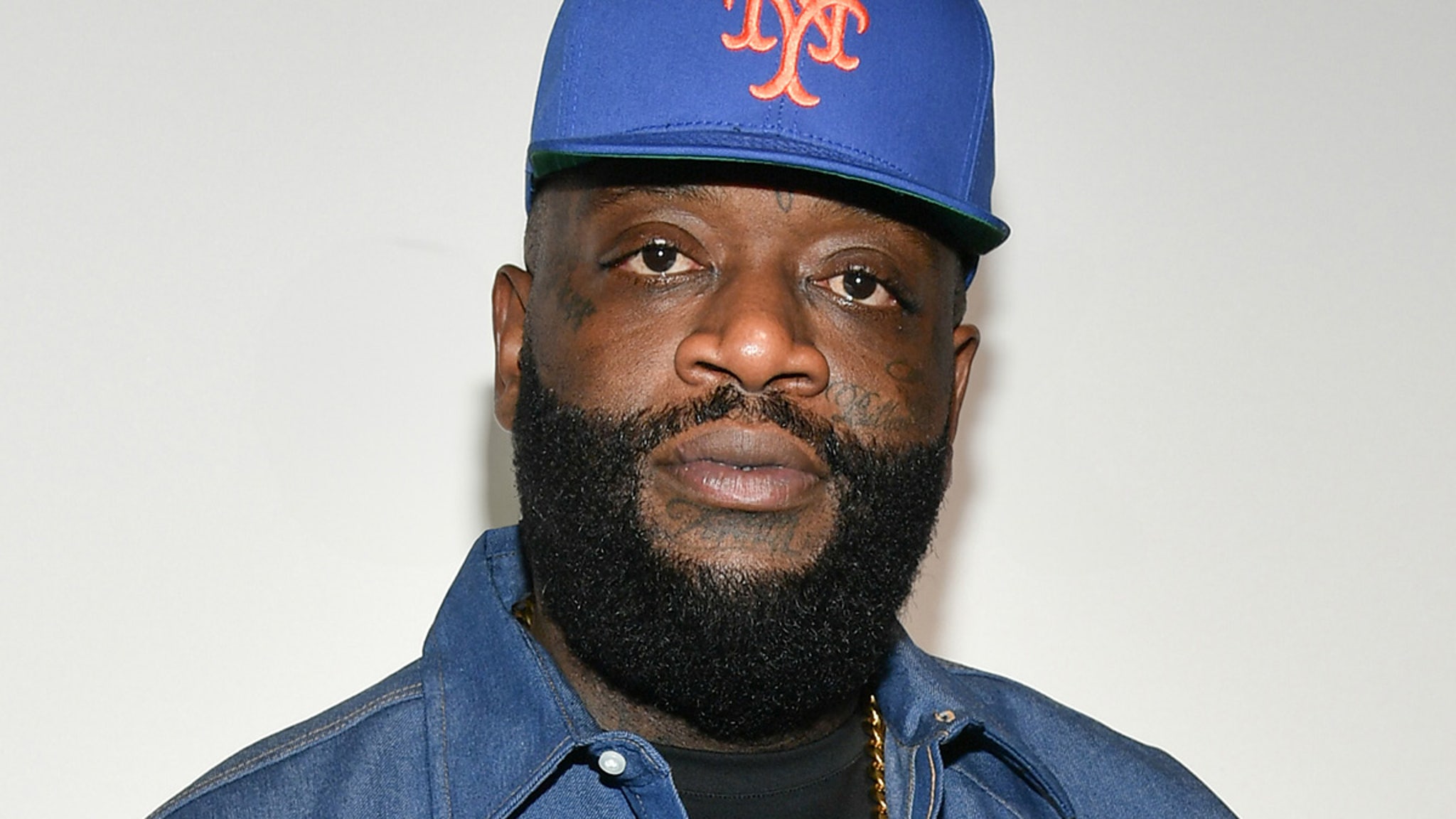
Rick Ross is facing a new legal challenge … ’cause a man just sued him, claiming Ross didn’t ensure his car show was accessible for disabled people.
A man named Darris Straughter is suing Ross because he says Ross marketed his car show as a dream opportunity to visit his property … but he says he didn’t get the chance … because a wheelchair-accessible shuttle bus never arrived to get him to the event — despite claiming he got multiple assurances there would be one.
Waiting for your permission to load the Instagram Media.
Darris says he paid for travel, lodging and bought a ticket — even selling his car to do so — to Rick Ross’ Car & Bike Show … and claims he reached out to the venue two weeks in advance to give them notice he needed reasonable accommodation for his wheelchair.
He claims car show organizers told him they’d have a shuttle to take him from the parking lot to the event … but says, after waiting several hours it never came. He got fed up, gave away his ticket, and went back to his hotel.

Darris and his lawyer, John Hoover Esq., say organizers promised a refund for anyone who didn’t get into the event … but says nobody ever followed up with him.
He’s suing Rick for breach of contract, unjust enrichment, and violation of the Americans With Disabilities Act … and he’s asking for damages and an order forcing the car show to provide disabled access in the future.
TikTok / @shaunjunious

We’ve reached out to Ross … so far, no word back.
-

 Politics1 week ago
Politics1 week agoVance brands Harris a 'coward'; Trump dinged for 'attacks and insults' as campaigns war after fiery event
-

 World1 week ago
World1 week agoWhy are fewer women winning EU leadership roles?
-

 News1 week ago
News1 week agoWe the People: Gun Rights : Throughline
-

 World1 week ago
World1 week agoThe Take: Is Silicon Valley going MAGA?
-

 News1 week ago
News1 week agoVideo: Biden and Harris Greet Americans Released From Russia
-
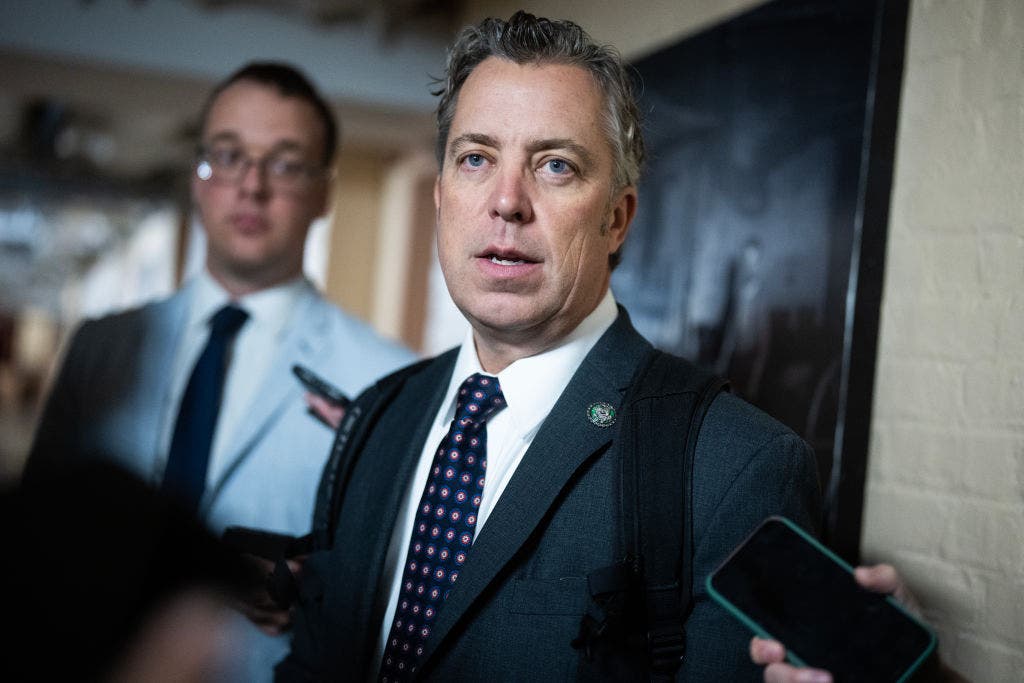
 Politics1 week ago
Politics1 week agoHouse conservative who's twice moved to impeach Vice President Harris faces competitive GOP primary
-

 World1 week ago
World1 week agoFiat to be first electric car produced in Serbia after EU lithium deal
-
Fitness1 week ago
For healthy aging, light exercise or sleep beats being sedentary


